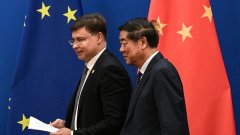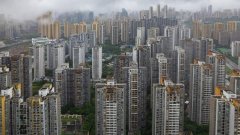Data released by the National Bureau of Statistics on July 31st by the National Bureau of Statistics shows that the manufacturing procurement manager index (PMI) in July was 49.0%, a decrease of 1.2 percentage points from the previous month.After a month -on -month increase, it decreased again.
(Beijing / New York Comprehensive News) The National Bureau of Statistics of China announced that the Index index of China's manufacturing procurement manager in July decreased by 1.2 percentage points from the previous month to 49%.
Comprehensive reports from China New News Agency, Bloomberg, Reuters and First Finance, data released by the National Bureau of Statistics on Sunday (July 31) showed that in July, the manufacturing procurement manager index (PMI) was 49%, compared withLast month fell by 1.2 percentage points, and decreased again after rising for two consecutive months.
Zhao Qinghe, a senior statistician of the China National Bureau of Statistics, pointed out that the fall of the manufacturing PMI that month was affected by factors such as the low season of traditional production, insufficient release of market demand, and lower prosperity in high energy consumption industry.
Among the 21 industries surveyed, 10 industries PMI is located in the expansion range. Among them, PMIs such as agricultural and sideline food processing, food and wine and drink refined tea, special equipment, automobiles, railway ships, aerospace equipment and other industries are higher than 52.0%.It has maintained expansion for two consecutive months, and the production needs continue to recover.
PMI, such as textiles, petroleum coal and other fuel processing, black metal smelting and pressure -delay processing, PMI continues to be located in the contraction range, which is significantly lower than the overall level of manufacturing. It is one of the main factors of PMI falling this month.
Data show that the production and operation activities and demand of the manufacturing industry have slowed down.The production index was 49.8%, a decrease of three percentage points from the previous month.The procurement activities of the enterprise are also tightened accordingly. The procurement index and the import index are 48.9%and 46.9%, respectively, both decreased by more than two percentage points from the previous month.
In July, the crown disease in Mainland China still exuded, and the external situation became more complicated and severe, and market demand was under pressure.The new order index was 48.5%, a decrease of 1.9 percentage points from the previous month, and dropped to less than 50%.The new export order index decreases significantly, a decrease of more than two percentage points.
Enterprise expectations have also fallen.The expected index of enterprise production and operation activities was 52%, a decrease of 3.2 percentage points from the previous month, the lowest level since 2022.
In addition, the non -manufacturing business activity index in July dropped from 54.7 in June to 53.8, and the comprehensive PMI output index in July dropped from 54.1 last month to 52.5.
Analyst: China's economic recovery is not stable
After the economic rebound in June, China's recovery was faltering.The analysis believes that, given that government prevention and control measures will relax with the ease of the epidemic and tighten with the outbreak of the epidemic, China's economic recovery has always been fragile.
The outbreak of the Shenzhen epidemic in the southern manufacturing town has affected the operation of the factory, which caused concerns about the interruption of the global supply chain.Gangkou City Tianjin is the location of Boeing and Volkswagen Factory. This month, restrictions have also been tightened to fight against a new epidemic.
Zhang Liqun, a special analyst of China Logistics and Purchasing Federation, said that the PMI index in July from rising to falling, indicating that endogenous downlink pressure was great.When the influence of the epidemic has a long -term accumulation, the demand shrinkage has accumulated a long time, and the multiple difficulties continue to continue and superimposed for a long time, causing more and more companies to be in trouble.
The analyst of the China Logistics Information Center, Wen Tao, believes that in general, the Chinese economy has maintained a momentum, but the recovery process is unstable, and short -term factors lead to tightening supply and demand, but the economic upward trend in fluctuations has not changed.
The Chinese State Council Prime Minister Li Keqiang said during the two sessions this year that the government set the target of this year's economic growth at 5.5%.However, due to extensive prevention and control measures, the Chinese economy has rarely increased in the second quarter.
Bruce Pang, chief economist of Zhongliang Bank, analyzed: "The manufacturing procurement manager index is less than 50, indicating that China's economic recovery is not stable. In the third quarterMore bigger than expected earlier. "




